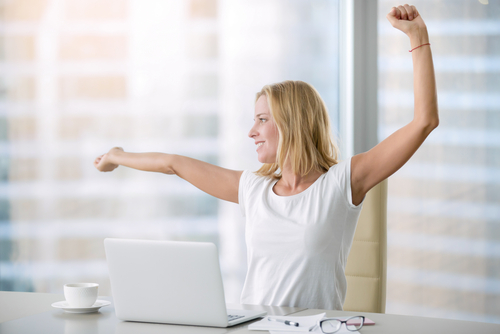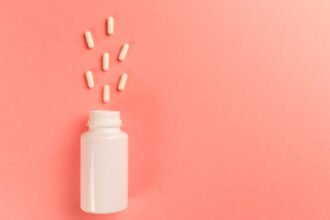When we are stressed our muscles become tense even though we may not realize it until later. Believe it or not, muscle tension is how the body protects itself from pain or harm. Depending on the stress level, we don’t realize the pressure we are placing on our back, shoulders, and neck. Stress on the body should not be a normal occurrence that we ignore.
There are many judicious techniques and pointers for muscle relaxation to help provide sound health. Learning how to relax can improve much of your stress-based environment. The following relaxation pointers will not take a lot of time, they are practices that can easily become a part of your daily mental exercise.
Progressive Muscle Relaxation
Find a place where you can sit or lie down. Take slow normal breaths. Close your eyes or just take-in a mental image of your body. Focus on your body parts including your head, more especially your forehead, jaw, neck, shoulder, arms, hands, derriere, legs, and feet. For each body part think about slowly tensing it, breathe easily then hold your breath for a few seconds (15 seconds), then release very slowly. You should begin feeling a more relaxed feeling. Remember that following your exercise you can implement great nutritional food intake such as post workout supplements, especially after all that clenching.
Autogenics
Autogenic relaxation will require you to use your visual mental imagery regarding your body to reduce stress. Let this muscle relaxation pointer instill an unrelenting passion to crush barriers and inspire greatness. You must repeat and see an image on controlling your body’s muscles, especially the largest muscle, the heart. Your heart controls the brain which in turn helps with our blood pressure levels, how fast our heart beats, digestion, and more.
Your exercise is to use your imagination to see yourself in a restful environment. Think about or focus on controlling your breathing, then relax each arm or each leg one by one. For each limb, see your arms and/or legs as feeling very comfortable, warm and feeling slightly heavy. Practicing this will slow your heart rate and induce a relaxed result. U.S. astronauts, Olympic athletes, and certain branches of the military introduces autogenics as part of their training.
Self-massage
Self-massage is a tried and true muscle relaxing practice. You can massage parts of your body anywhere without looking weird or a loved one can evoke this helpful practice. The technique involves gentle taps with your fingers, hands, fist, or cupped palms. Knead across knotted muscles with long, light, strokes. You can use this exercise at night to relax and experience a great night’s sleep. All it takes is a five-minute break with deep breathing exercises for a self-massage to ease those tired and tense muscles. For example:
Neck: Knead the muscles at the back of your neck and shoulder going up and down both sides of your neck.
Head: Take your thumbs to make tiny circles around the base of your skull. Slowly massage your scalp with your fingertips. Tap your fingers against the front, back and sides of your scalp.
Face: Massage your face by making tiny circles with your thumbs or fingertips on your temples, forehead, and jaws. Now massage the bridge of your nose, eyebrows, and temples.
Yoga
There is nothing like the more than the 5,000-year-old practice of yoga to ease and relax tense muscles. Not only are its pose techniques beneficial but yoga exercises are coupled with deep breathing stimulations. In addition to lessening muscle stress, yoga has proven to increase overall strength, balance, and flexibility. With the yoga techniques, choose the one that fits your stamina. For example, there is Hatha yoga that features gentle movements to relieve stress, Satyananda yoga that features deep relaxation poses and meditation, and Power yoga that is more intense.
Visualization
Visualization is as its name applies ? taking a visual mental journey to peace and calm. This judicious muscle relaxing pointer involves using your senses but in a visual context. For example, you are sitting on the beach listening to the waves lapping against the shore. You can hear the seagulls squawking and flying in the air and you can smell the salt water. This is how you will sense your body after you have found a serene spot to begin your visualization technique:
o Close your eyes
o Take several slow and deep breaths to be relaxing
o Visualize yourself in a location that symbolizes serenity
o Now imagine yourself becoming calm and relaxed
Visualization will be a customized technique because there is no one right way to evoke visual imagery to relax muscles. When you are in your perfect calming visual location, focus on your senses to give yourself more vivid imagery. The more you use your senses, the more relaxed your mind and body become. Tell yourself that while you are in your perfect spot that you can return to it whenever you want to relax. Then open your eyes and you will feel more comfortable and relaxed.
Conclusion
Relaxing your muscles can lead to better physical and emotional health, and more overall physical stamina. It’s well worth the effort!







